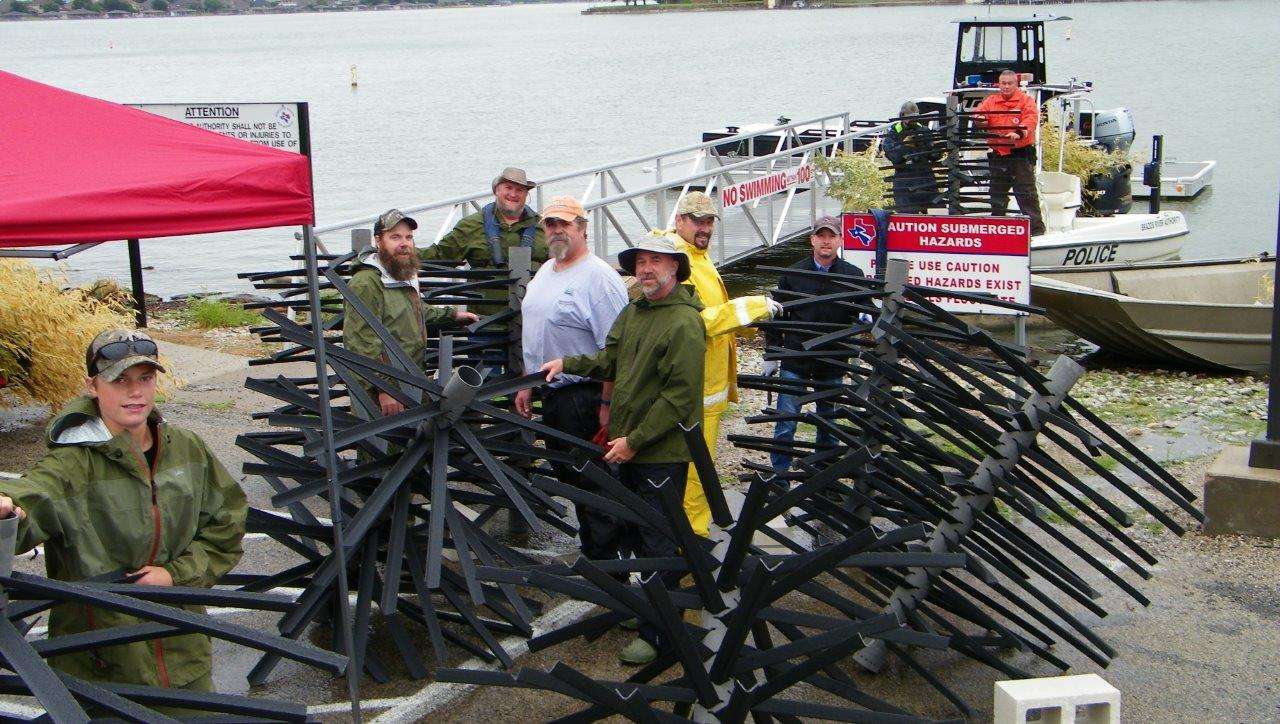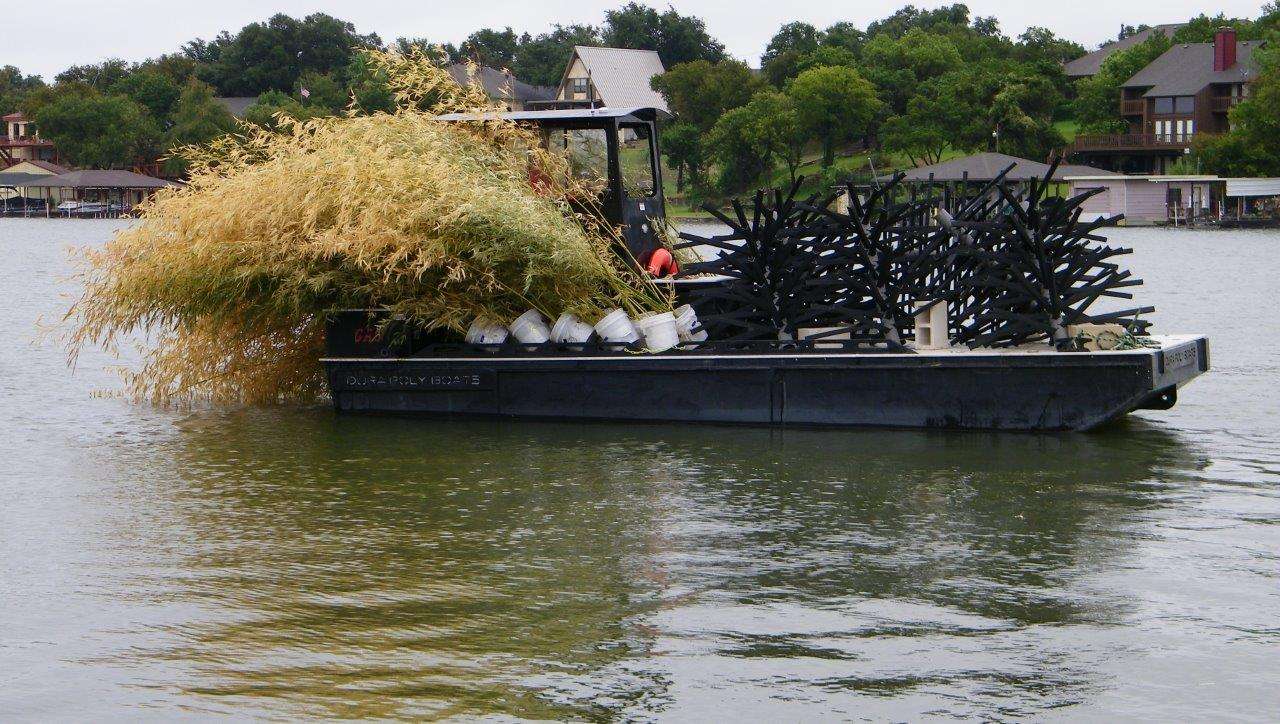
Proctor Lake is no stranger to the drought-flood cycles that affect West Texas reservoirs. Reservoir aging has also degraded available fish habitat by siltation, loss of vegetation and breakdown of woody habitat. To tackle the fish habitat issues, Texas Parks & Wildlife Department, Brazos River Authority, US Army Corps of Engineers and B.A.S.S. Nation volunteers worked to create brush piles and eight reef-like areas. About 130 artificial structures and 19 brush piles using bamboo canes were placed in strategic locations.
“The tree piles will eventually break down (within five years) but will provide habitat in the shallower areas of the reservoir,” said Michael Homer Jr., TPWD Inland Fisheries Division district supervisor in Abilene. “Artificial reef areas will persist much longer and may be crucial refuges for fish when water levels drop.”
Several models of Fishiding fish habitat structures and Mossback Safe Havens were installed at Proctor Lake. Each structure is unique in its design, height and complexity of limbs providing cover for fish ranging in size from small bait fish to larger bass, crappie and catfishes. The stake buckets filled with bamboo shoots should last longer than softer woody species.
“Adding diversity to the available fish habitat can allow for more species to use these areas,” said Homer. “The combination of the various Fishiding structures, Mossback Safe Havens and brush piles allows us to create a more diverse three-dimensional environment for fish species.”






